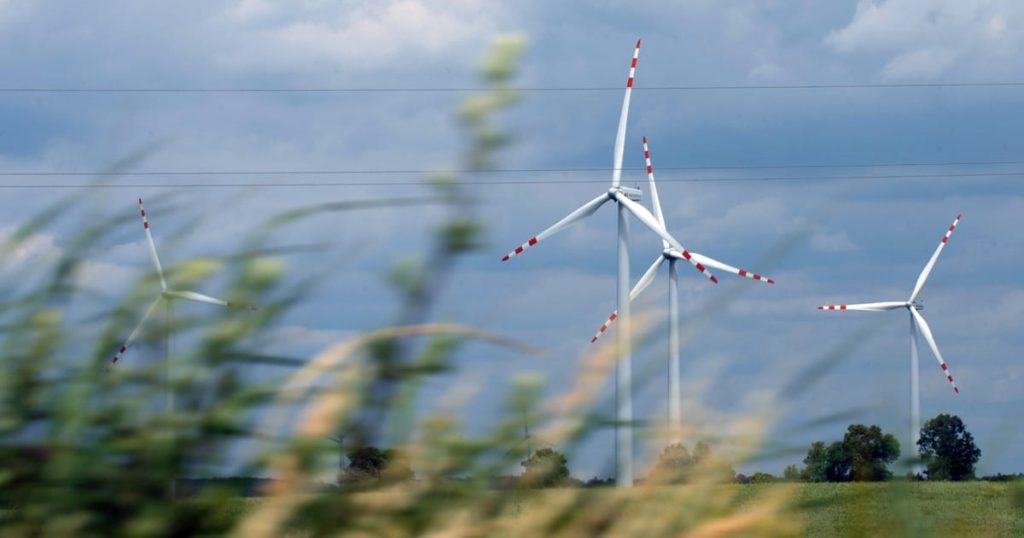Press play to listen to this article
Voiced by artificial intelligence.
WARSAW — A long-awaited bill passed by the Polish parliament promises to make land available for the development of wind power — but a last-minute amendment will make it all but useless in practice, according to Poland’s wind power lobby.
Poland’s Law and Justice (PiS) government has been under pressure to ramp up renewables and move away from coal- and lignite-fired power, which produce some 70 percent of electricity.
But the new bill, passed on Wednesday, imposes a strict limit that the wind sector says will hamper development: Wind turbines must be 700 meters from residential housing.
That stipulation — added in a hand-written amendment by PiS lawmaker Marek Suski — makes it nearly impossible to build onshore wind power, according to Janusz Gajewski, president of the Polish Wind Energy Association (PSEW), an industry lobby group. The government had previously floated a 500-meter limit.
According to analysis commissioned by PSEW — conducted by Urban Consulting, a renewable energy consulting services company — the new legislation eliminates all possible locations for new wind power plants in some Polish regions.
“We are afraid that no new wind development will take place because investors simply will not invest in smaller farms,” said Gajewski. “It doesn’t make economic sense.”
The bill has dashed wind developers’ hopes of a change in policy from the ruling party, which has not been a champion on onshore wind development. In 2016, it passed a law forbidding the construction of wind farms within a distance of 10 times the height of a turbine from residential buildings.
As technological and design advances made turbines ever taller, that excluded a vast majority of Poland’s fairly evenly populated territory from any new wind power projects.
“We want to protect citizens who are afraid that [turbines] will be put in their gardens,” said Suski, the MP who submitted the amendment. “It will not be the case that people will live right under a windmill.”
Targets out of reach
The new legislation risks undermining Poland’s plans to shift toward renewables, some warn.
“The stricter limit will result in less wind power capacity, which should exceed 20 gigawatts by 2030 if Poland wants to replace ageing coal-fired capacity and meet the growing demand for electricity,” said Tobiasz Adamczewski, director of renewables program at Forum Energii, a think tank.
That’s particularly problematic as demand is expected to grow, he pointed out. “We’re going to need ever more power because of electromobility, green hydrogen, and heat pumps,” he said.
The original bill would have allowed Poland to increase its onshore wind capacity to 44 gigawatts by 2030, up from just 7.7 GW currently, according to a recent study by climate think tank Ember.
The new version could limit Poland to only 11 GW, far below the 17-27 GW that’s needed for the country to comply with EU climate legislation, said Paweł Czyżak, an analyst with Ember.
With the installation of onshore wind stalled once again, Poland’s hopes to replace coal will rely on more offshore wind — several large projects are underway in the Baltic Sea — and nuclear power.
But Forum Energii’s Adamczewski is worried that Poland will also end up building gas-fired power stations to ensure energy security.
“While they don’t have to be super emissions-heavy, more gas in the mix means bigger dependency on imports,” he warned.

